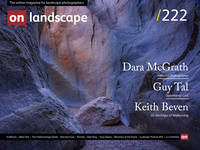Miles Flint chooses one of his favourite images

Miles Flint
Miles Flint was born in France and grew up living abroad. He studied Chinese at university and spent a year in China in the late stages of the Cultural Revolution. By sheer chance he found a career in technology. A first photo workshop in 2009 was a turning point and photography has gradually becoming his main work. He is mainly a landscape and travel photographer but is now finding himself ever more intrigued by architecture and cityscapes. Miles is based in London.
This image on the cover of the book The Unpainted South caught my eye in a book shop in South Carolina in April 2019. The book is sub-titled Carolina’s Vanishing World. Selden B Hill took the photographs and the poetry was written by William P Baldwin.
In the cover image, the barn stands alone, propped up in the morning mist by the columns that support its eaves, somewhere in the plains of South Carolina with just a single tree for company. To me, the photo has the feeling not just of emptiness and loss but also one of the building looking back at the visitor as if to say, “I am still here, still proud and still defiant even though I no longer work.”
The image kept coming back to me as I sat at home in the leafy suburbs of south west London. Who had built the barn? How could something so engaging have been abandoned? Where had the owners gone? These are reactions that many photographers will recognise and empathise with about other places that we are drawn to. Leaf through the book and “The Barn” is just one of many abandoned, derelict buildings photographed by Hill.
South Carolina does not seem to be the main destination for photographers but there is much to see: the city of Charleston, faithfully restored to her former self after the devastation of Hurricane Hugo in 1989 sits in what is known at the Lowcountry - a large area of land rising no more than a few feet above sea level; forests of Southern live oak with their long flowing tendrils of Spanish moss on the banks of the marshlands of the May River and a few miles further inland; the Old Sheldon Church ruined first by the British and again in the Civil War; plantation houses - some gated and some open to visitors. Everywhere the land is flat with barely a mound, let alone a hill to break the skyline. What the Lowcountry lacks in rolling landscape and mountains it makes up in atmosphere and history – a history that struck me as more alive and present than it is in Britain.
I wanted to return and six months later, in October 2019 I flew to Charleston on my own. Most of the passengers on the flight seemed to be going to play golf at the many famous courses along the coast to the south of Charleston but I wanted to explore and discover, perhaps even to find Selden’s barn.

